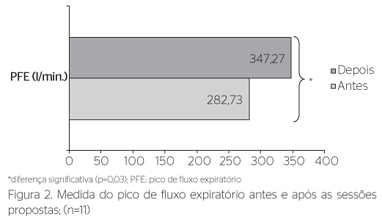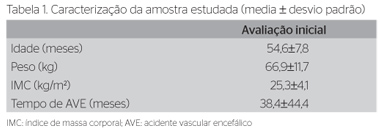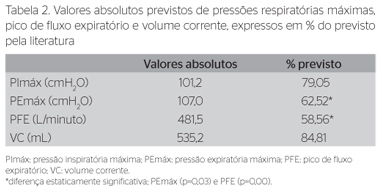Individuals with sequelae of stroke present as a common complication hypotonia and weakness of trunk muscles, in special the rectus abdominal muscle which is the main muscle activated for cough. The electrical stimulation (ES) is being widely used to fiber recruitment in many muscle groups and pathologies. The present study aimed to evaluate the efficiency of electrical stimulation with median frequencies (ETMF) in expiratory muscles strength and cough in patients with sequels of stroke. It is a quasi-experimental study (before and after) where 11 individuals were selected after stroke between 40 and 65 years, both sexes and hemodynamically stable. Patients were evaluated about clinic and respiratory scores (ventilometer, peak of expiratory flow (PEF) and manometer (MIP and MEP) and submitted to the protocol, which consisted of ETMF in expiratory muscle (abdominals rectus) with the unit of Russian current with 2,500 Hz carrier frequency modulated at 40 Hz for 15 minutes by 15 sessions. In the initial assessment evidenced decreasing in inspiratory and expiratory muscular strength (MIP, MEP) and PEF when compared to predicted values in literature. In the end of ETMF it happened an increase in MIP, MEP without statistical significance (p=0.18 and p=0.29) but the PEF has had an increase of 283.73 L/minute to 347.27 L/minute (p=0.03). It can be seen that the ETMF was effective in the improvement of the parameters evaluated, with PEF being the greatest impact and statistical significance, however further studies with larger populations are necessary to analyze this new therapeutic approach.
electric stimulation therapy; stroke; physical therapy modalities; cough




